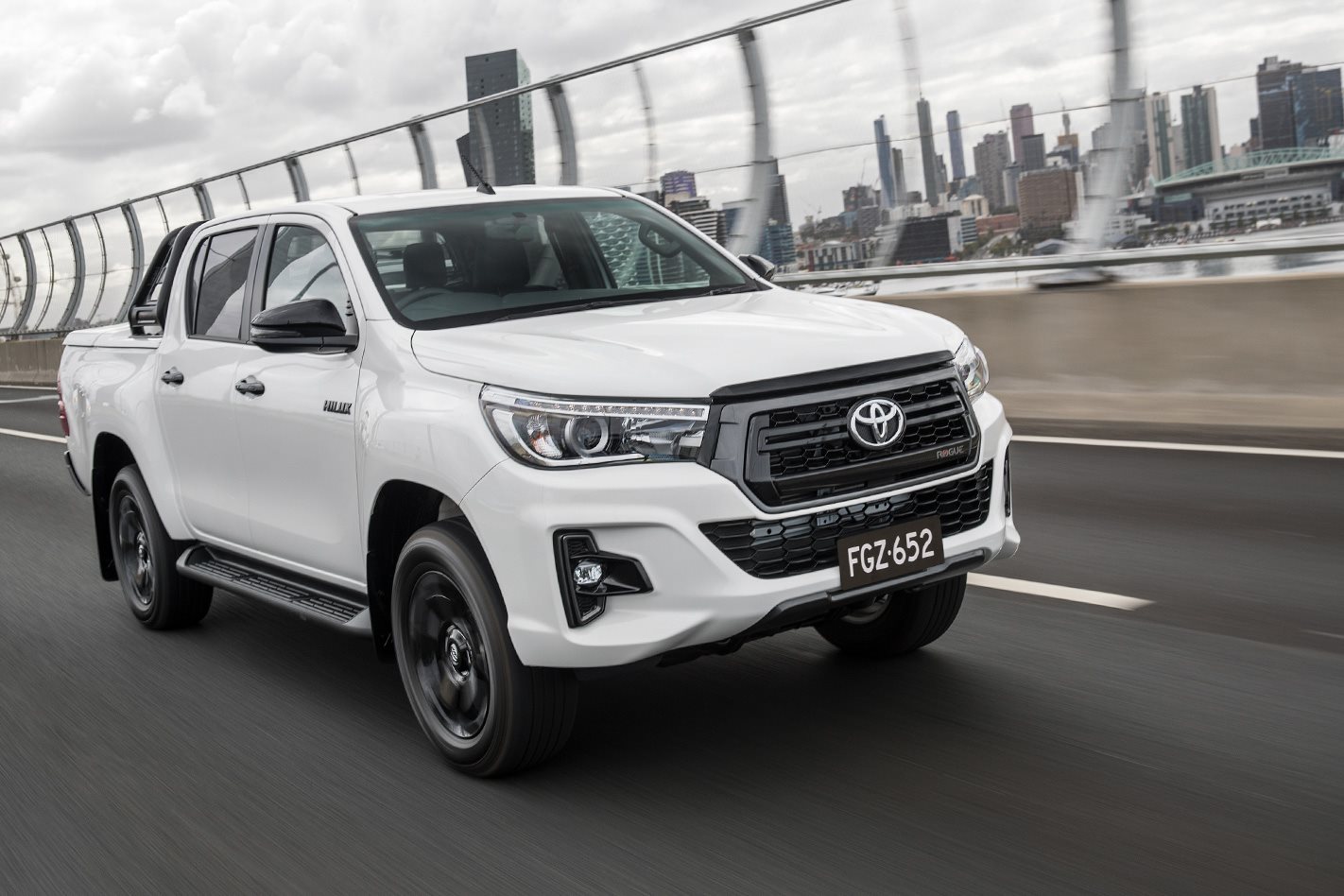Spruced up Hiluxes designed and developed in Australia hit the road and rocks in Flinders Ranges to prove their worth
WHAT IS IT?
A trio of Hilux variants aimed at delivering great urban utility and style (Rogue), or improved off-road durability and functionality (Rugged and Rugged X)
WHY WE’RE DRIVING THEM
When dual-cab utes command a market share as huge as they do in Australia, and Hilux tops the sales charts, these additions can’t be ignored.
MAIN RIVALS
Ford Ranger, Volkswagen Amarok, Mazda BT-50, Mitsubishi Triton, Isuzu D-Max, Mercedes-Benz X-Class
THE WHEELS VERDICT
If you’re considering a Hilux, and you want it to function more easily as a family friendly SUV, or you have plans for a big off-road adventure, then the three new models demand a close look.
PLUS: All three variants deliver on the goals of improving utility, urban functionality, or off-road capability and durability. Naturally they come infused with the Hilux reputation for reliability, and are seriously useful in rugged terrain. MINUS: No addition of AEB; still drum rear brakes on 2.2-tonne vehicles; most of the practical advantages of the extra equipment can be achieved independently for less money
THE WHEELS REVIEW
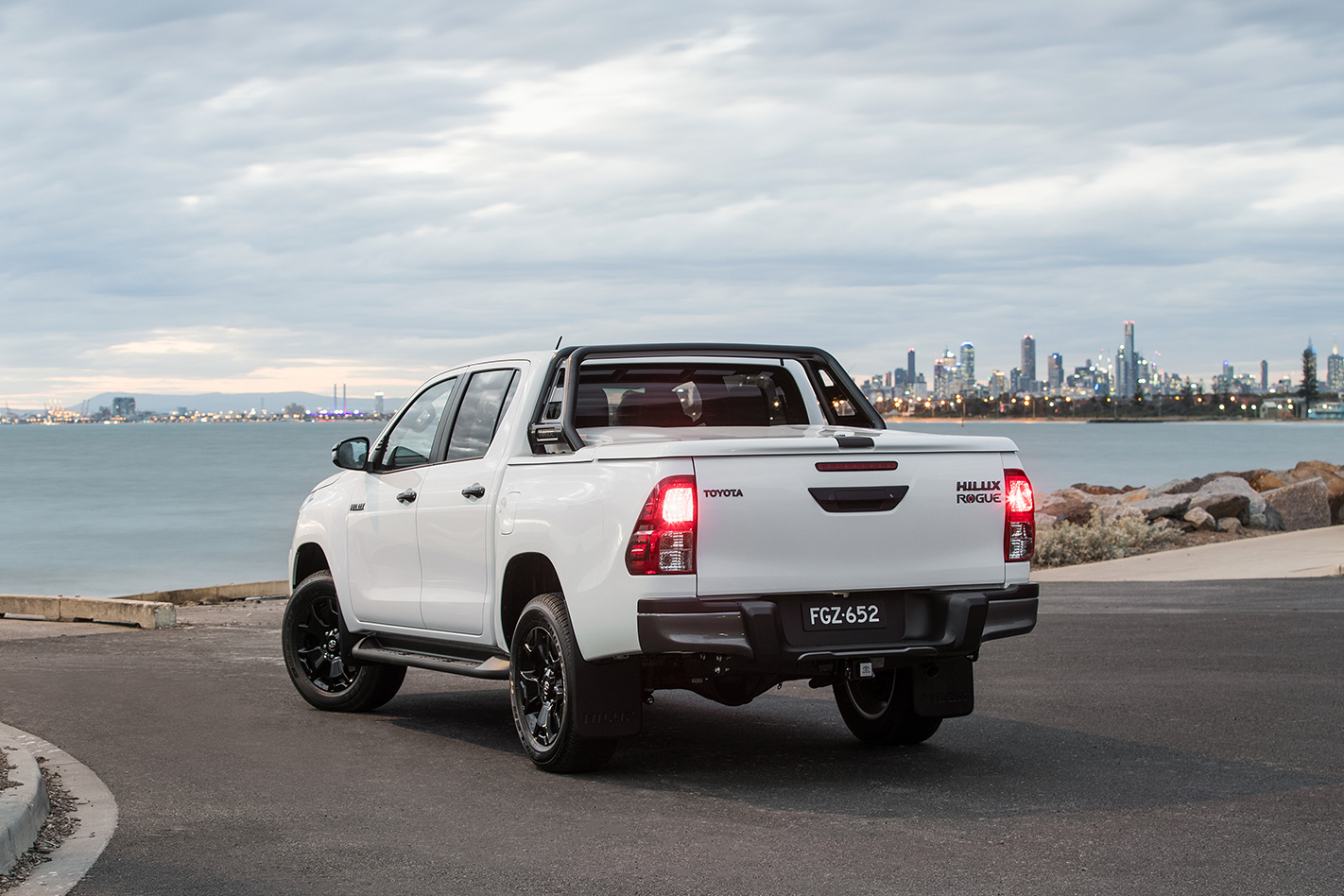
Instead, the new arrivals – called Rogue, Rugged, and Rugged X – are aimed at delivering greater urban utility and style (Rogue), or improved off-road durability and functionality (Rugged and Rugged X).
Equally significant is the fact that all three were designed, engineered and developed by Toyota Australia, all helping cement the division’s status as TMC’s (Toyota Motor Corporation) centre of excellence for off-road vehicles.
So while the new Hilux models are flag-wavers for Toyota Australia’s 150-strong design and engineering teams, they are also a welcome shot in the arm for the four local suppliers who provide the key equipment.
The Rogue, which we’ll cover first, is now a global model in its own right, albeit with different names for different markets. It’s based on the Hilux SR5 model (as is the Rugged X), but fitted with a much tougher, bluffer snout, fog lights integrated into the lower section of the revised front fascia, and a new design of (same size as SR5) 18-inch wheels.

The tub is now lined with marine-grade carpet to improve the appearance and cut down rattle noise, and additional dust seals are fitted, giving reasonably effective dust reduction based on our off-road drive on dry and dusty tracks in South Australia’s Flinders Rangers.
Inside, the Rogue gains perforated leather front seats with heating, and power adjustment for the driver, as well as new white with orange instrument graphics, dark headliner, and new dark-plastic interior trim infills. Rogue is offered with six-speed auto only for $61,690.
Moving to the Rugged X, also based on SR5, sees a model pitched at buyers who would otherwise spend thousands adding aftermarket accessories to make their vehicle better prepared for that big outback getaway, or who tackle properly testing bush terrain.
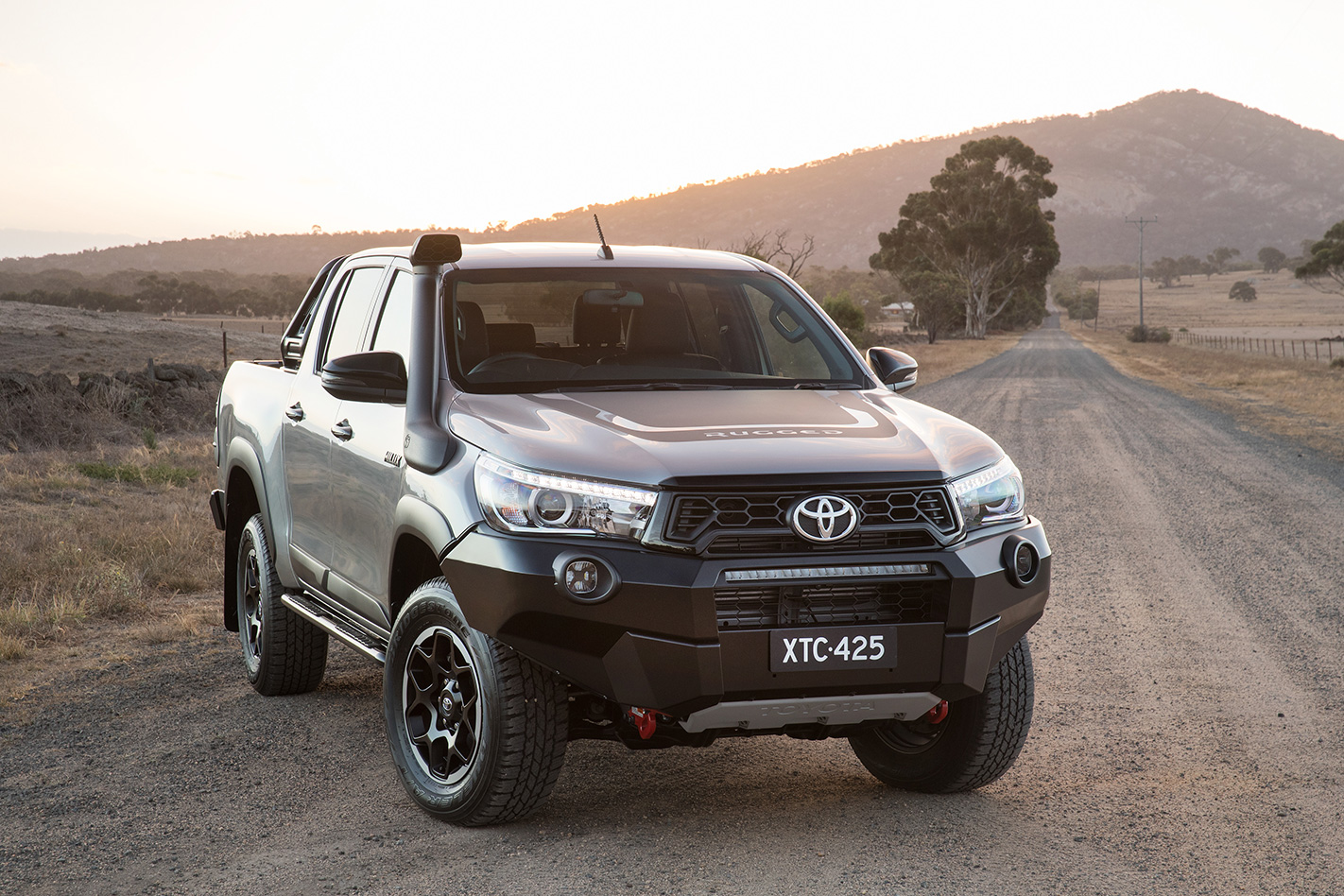
Along the flanks are side steps that link to under-vehicle rock rails intended to provide chassis protection. Our drive included a dry river-bed crossing that required the negotiation of a high, rocky outcrop that saw the hardware properly tested. Yes, there were plenty of ugly graunching noises, but given Toyota’s claim that each rail can support the entire weight of a fully loaded vehicle, it’s no surprise we pushed through without an issue.
Like the Rogue, the Rugged X also runs the sports bar above the rear of the cabin, while a steel bumper adds extra protection and the (standard) tow-bar mounting also provides recovery hooks. The air snorkel running up the driver’s side A-pillar is also an essential accessory for owners planning on tackling deep river crossings.
Inside, as with the Rogue, the Rugged X gets perforated leather front seats with heating, and power adjustment for the driver, as well as the revised instrument graphics.

The 2.8-litre turbo-diesel four remains a gruff but agreeable slogger in the lower part of its range, but quickly turns loud and breathless above 3800rpm.
The constant reactiveness and inherent jiggliness of the chassis tune is just something you have to learn to live with; the rear damping has a rebound kick like an irate mule because the leaf-sprung live axle is designed to bear payloads greater than an Australian cricket fan’s shame and sorrow. But the on-road compromises are clearly quite tolerable for hundreds of thousands of Aussies, as evidenced by Hilux’s top-seller status.
Those same compromises are also easier to accept once you’ve experienced the near-unstoppable off-road ability; especially Rugged X and Rugged models. The combination of ground clearance, approach and departure angles, traction, and low-range crawling ability means that you’re extremely unlikely to be prevented from making it to anywhere worth getting to.
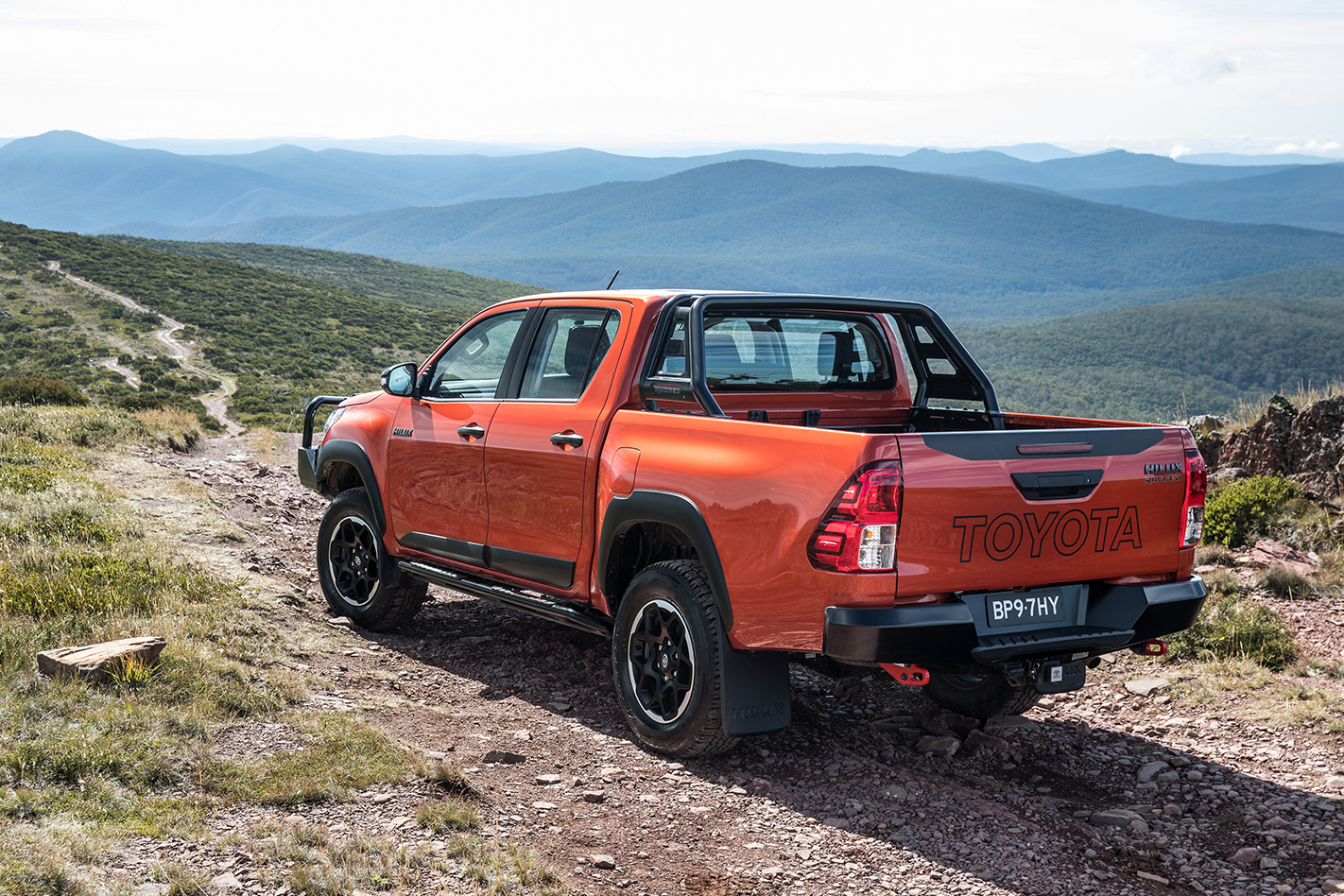
It’s essentially the same package of additions as the Rugged X, but the starting point is SR-spec, not SR5. The most notable hardware change is at the front, where the bullbar protection rises over the damage-prone area of grille and headlights, to better protect you from that nocturnal slam-dance with Skippy on mosh-pit road. Oh, and DAB and sat-nav are now fitted; useful tech additions to the more rudimentary, fabric-trimmed interior. Rugged is priced at $54,990 for the manual, or another $2000 (to $56,990) for the automatic.
So, back to the value question. This is blurred to some extent by the fact that the SR5 model is currently offered as a driveaway deal, with on-road costs included. This is not the case with the three new models, so any legitimate comparison requires calculation of on-roads, which vary from state to state.
A Double Cab SR5 4×4 Pickup can be yours on the road for $56,440, so the Rogue wears a $5250 premium before its on-roads are factored in. The Rugged X pushes that to a $7250 difference, again before on-roads.
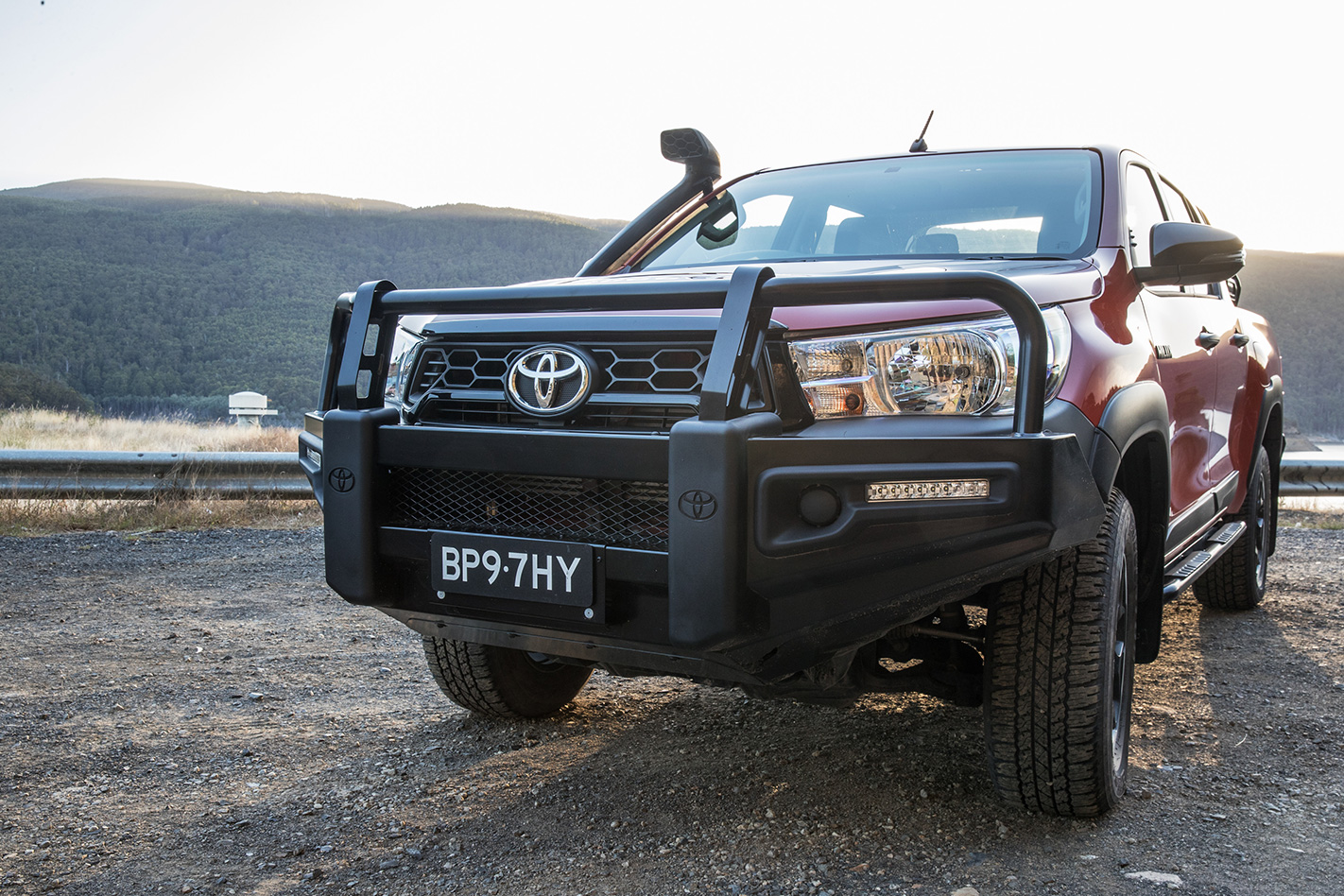
All three new Hilux models hit showrooms on Thursday April 26th.
Model: Toyota Hi Lux Rugged X automatic Engine: 2755cc 4cyl, dohc, 16v, turbo-diesel Max power: 130kW @ 3400rpm Max torque: 450Nm @ 1600-2400rpm Transmission: 6-speed automatic Weight: 2252kg 0-100km/h: 11sec (estimated ) Economy: 8.6L/100km Price: $63,690 On sale: Now
MORE: Toyota Hilux Range Review MORE: Toyota Hilux Specs, Range & Price


